High spout kitchen faucets: types and tips for choosing
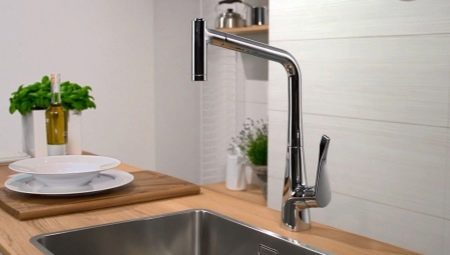
When choosing kitchen sanitary ware, you need to take into account many parameters, including efficiency, reliability, design, dimensions, safety and ease of use. Therefore, it is worth considering the common types of high spout kitchen faucets and familiarizing yourself with the basic tips for choosing them.
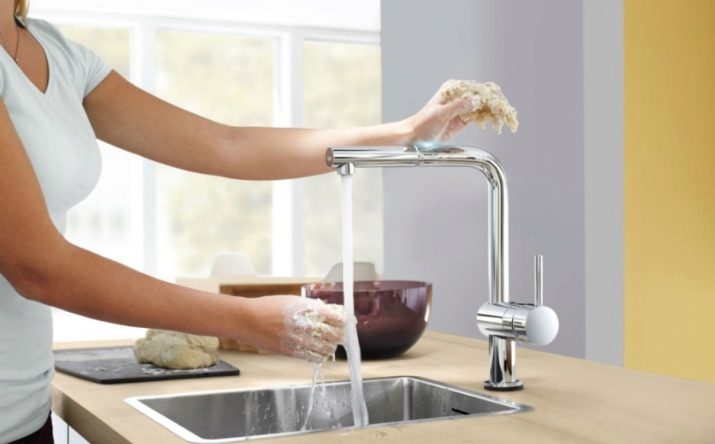
Peculiarities
It is customary to refer to faucets of this type as products in which the height of the spout is more than 25 cm. Such plumbing is intended mainly for sinks with a depth of more than 23 cm.
If you put such a mixer on a shallower sink (especially with a flat bottom), then a stream of water falling from a great height will splash over the edges of the sink, which will ensure the appearance of puddles on the floor of your kitchen and reduce the convenience of using the sink.
You should also take into account the width of the sink - narrow sinks are poorly combined with a high spout. Installing an aerator will help reduce splashes.
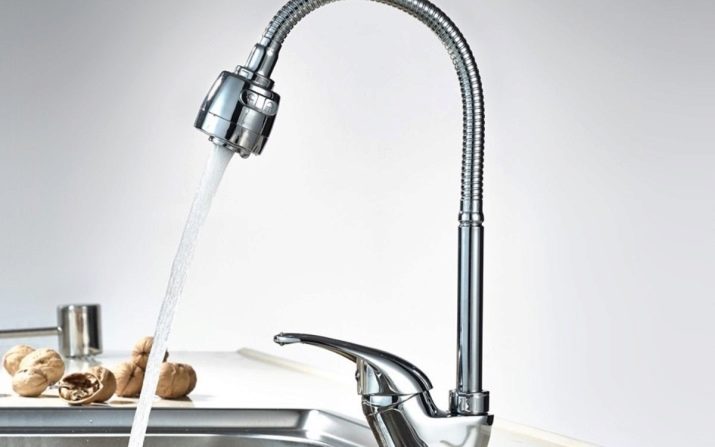
Another disadvantage of this arrangement of products is that they take up a lot of space, which limits the possibility of placing shelves for dishes, a boiler or other kitchen equipment and furniture above the sink. Swivel models additionally require sufficient free space on the side of the sink.
The high position of the spout allows you to use this mixer for washing or filling tall dishes with water: pots, bottles and vases.
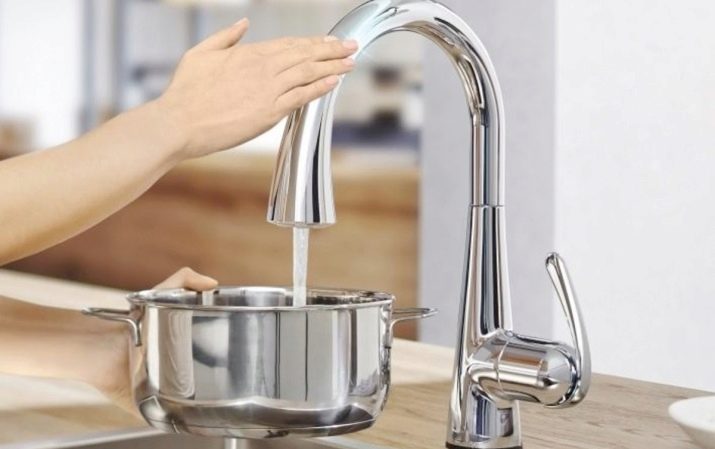
In such models, it is easy to change the gasket, which makes them easier to repair.
Varieties
According to the design of the spout spout, mixers are:
- S-shaped;

- L-shaped;
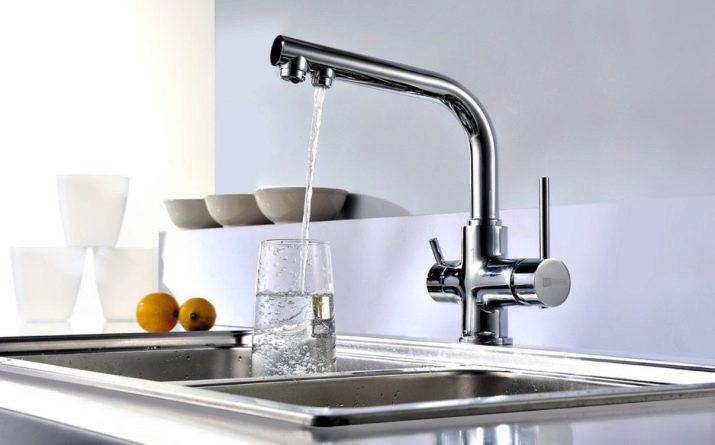
- R-shaped;
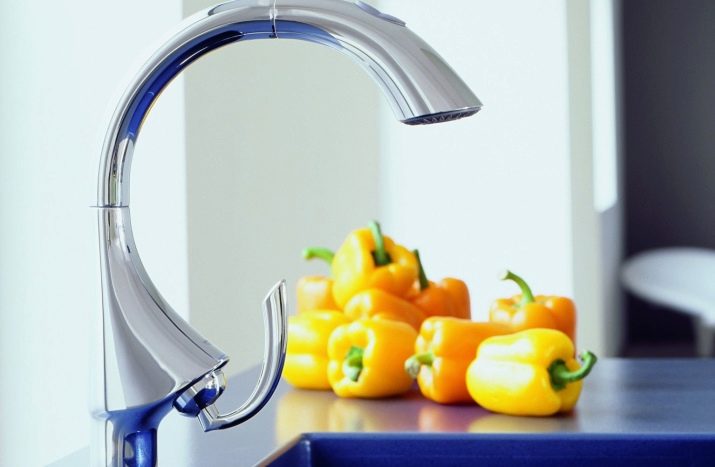
- J-shaped;
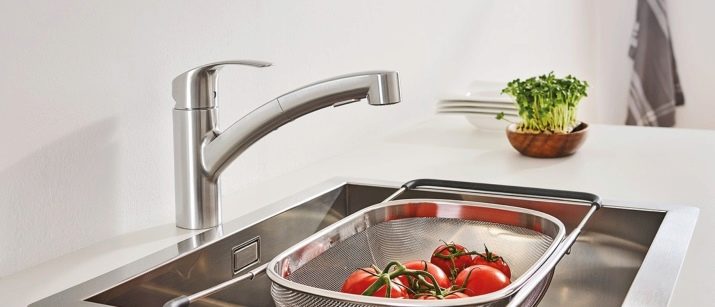
- compact - the flexible spout can be pulled out of the body, making it suitable for use as a mini shower.
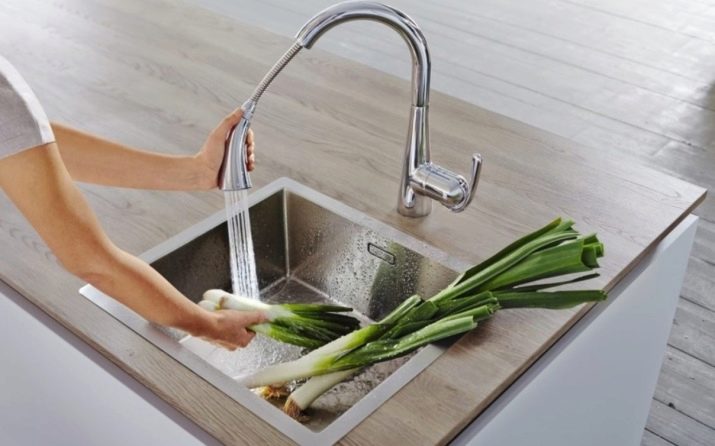
In terms of mobility, there are options with a rotary and a fixed spout.
According to the principle of action, there are:
- single lever mixers - they allow you to quickly create the desired temperature of the water flow, are compact, easy to install, quite hopeful and economical, but they can become unusable if there are solid impurities such as sand in the water;
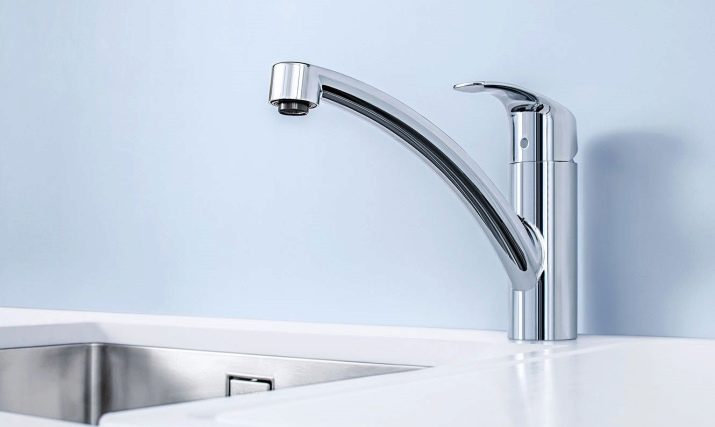
- two-valve models - they are distinguished by a simple design and economy, but take up a little more space and require frequent replacement of gaskets in taps;
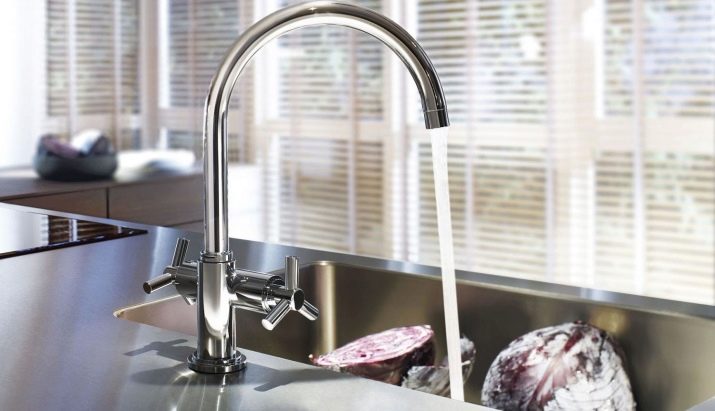
- thermostatic - allow you to set and maintain the required temperature and water pressure, but are expensive and consume electricity;
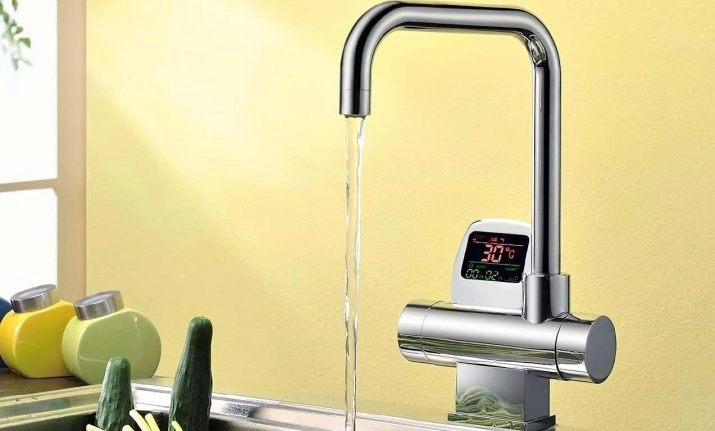
- contactless - due to the reduced number of mechanical assemblies, they are more reliable, use water sparingly and allow you to select the desired temperature, but they are quite expensive and not very convenient for use in the kitchen due to the need to constantly keep your hands near the sensors.
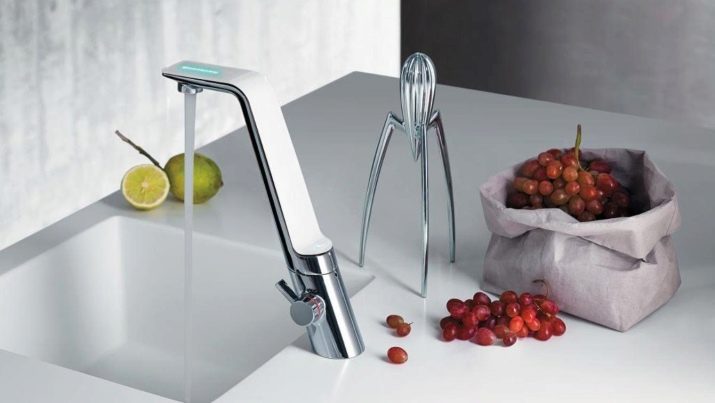
There is also a classification by material:
- stainless steel - are characterized by high mechanical strength, resistance to temperature changes and corrosion, service life up to 25 years;
- brass - they differ significantly less than that of steel, in mass with slightly lower indicators of mechanical and temperature resistance, due to which they can serve faithfully for 10 years;
- bronze - properties are similar to brass, but they have a slightly greater fragility and mass, as well as a more beautiful appearance;
- ceramics - it looks very beautiful, but it is fragile, high price and the need for careful care;
- aluminum and its alloys (mainly silumin) - they are characterized by a low price and light construction, but they are easily deformed, they do not tolerate water pressure above 3 atmospheres, sometimes they contain lead compounds (especially cheap Chinese models) and rarely work without breakdowns and corrosion for more than 1 year;
- plastic - absolutely not subject to corrosion, they are light and durable, easy to maintain, but the guaranteed service life rarely exceeds 2 years.

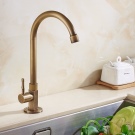
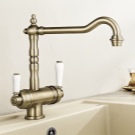
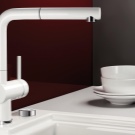
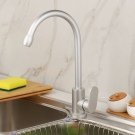
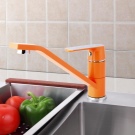
It is worth paying attention to the coating material:
- enamel - resistant to corrosion and mechanical damage, but it can chip off when struck by sharp and hard objects, there are enamel coatings for every taste: white, red, black, beige, while metal coatings are usually gold, copper or metallic;
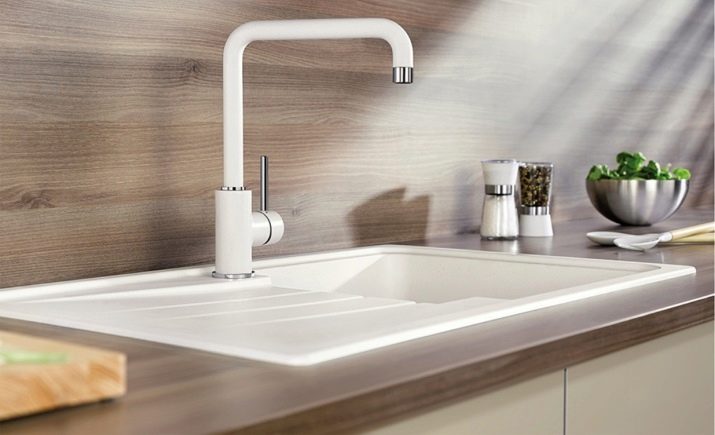
- chrome - protects against corrosion and bacteria, looks good, but is less durable than other types of coatings;
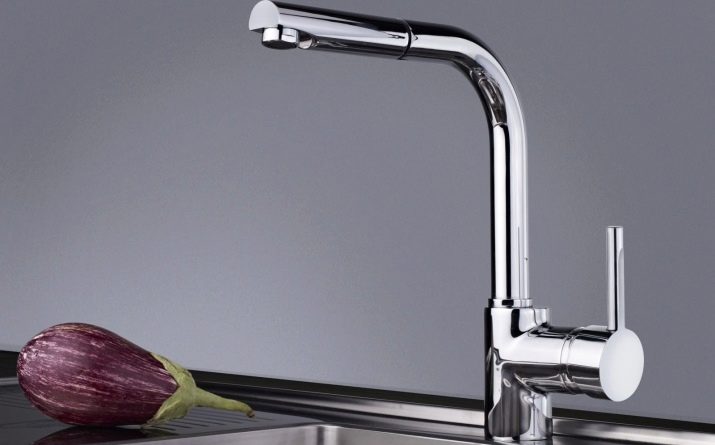
- nickel - by properties it is similar to chrome, but differs in less strength, moreover, it becomes coated faster, but due to its glossiness, the nickel coating looks more beautiful than matte chrome;
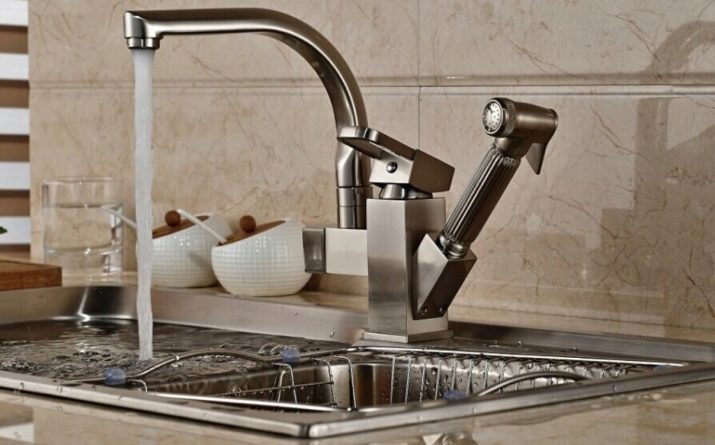
- stainless steel - the most durable material, which has a relatively high price, aesthetic properties are inferior to all other coatings.
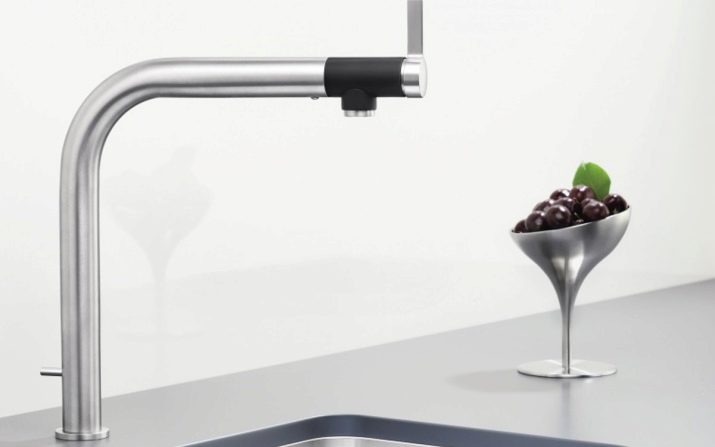
Popular models
Currently, the following products are most popular on the Russian market:
- Rossinka Silvermix S35-23 with a spout height of 25 cm, a lever adjustment system and a 7-year warranty;
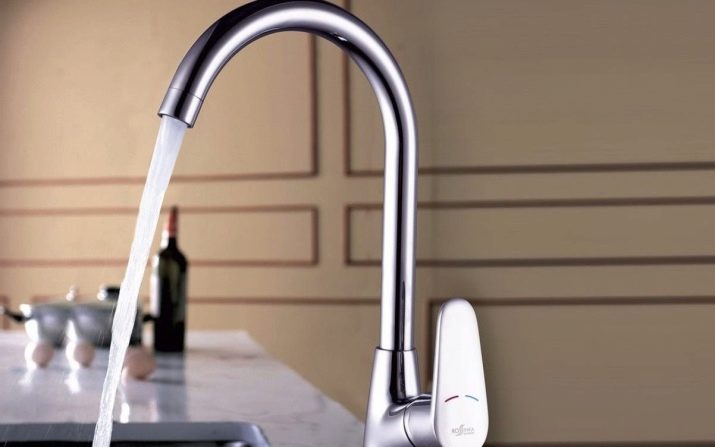
- Grohe Concetto 32663001 with a retractable spout (up to 45 cm), a smooth lever, an installed aerator, a brass base and a chrome finish;

- Kaiser Teka 13044 with a spout of 27.5 cm and a separate outlet for filtered water;

- Jacob Delafon Carafe E18865 with 35 cm spout, two-position aerator and 25 years warranty.
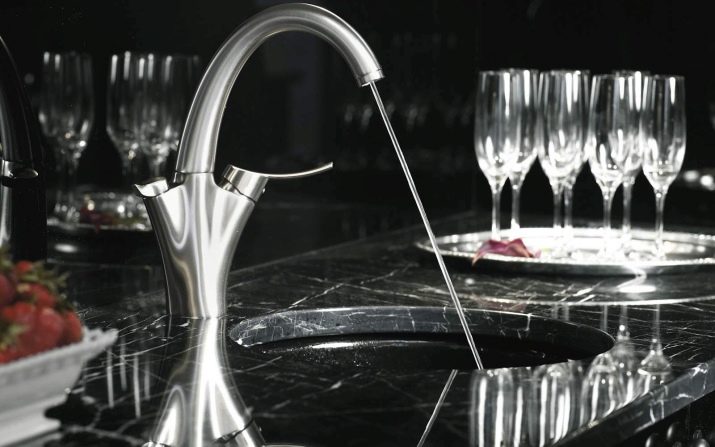
You can learn more about high spout taps in the following video.








